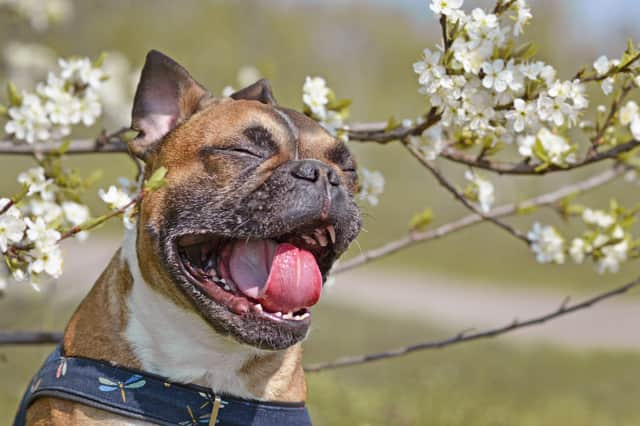Here’s what you should do if you think your cat or dog has hay fever


Hay fever season is now upon us, but it’s not just humans that suffer with this condition - pets can become irritated by high pollen counts too.
Here’s everything you need to know about hay fever in cats and dogs, including signs and symptoms, what to do if you think your pet has it, and treatment.
Advertisement
Hide AdAdvertisement
Hide AdWhen is hay fever season?
There are different hay fever seasons, depending on the type of pollen. The Met Office explains that, “Tree pollen occurs first, typically from late March to mid-May. Grass (which actually has two peaks) lasts from mid-May until July, and weed pollen covers the end of June to September.”
What are the symptoms of pollen allergies in pets?
PDSA Vet Olivia Anderson-Nathan, explains to the Met Office that even though the cause of the allergies is the same in pets as it is in humans, the signs can be a little different.
Although in humans, you might expect a runny nose, watery eyes and feeling short of breath, these signs are much rarer in our pets.
Instead, these are some of the signs that cats and dogs might show if they are allergic to pollen:
Advertisement
Hide AdAdvertisement
Hide Ad-Licking or biting their paws-Excessive scratching-Redness of the skin, especially around the eyes and ears and in between the paws-Shaking their head-Rubbing their ears or muzzle-Tired or lethargic, particularly on days when the pollen count is high
What should I do if I think my dog or cat has hay fever?
If you do notice that your cat or dog is showing any of these signs, particularly during the summer months, you should take them to see your vet.
However, some of the symptoms listed above can also be signs of other health issues, so your vet may want to rule these out before treating your pet for allergies.
If an allergy is diagnosed, it’s not always known what the cause is.
Advertisement
Hide AdAdvertisement
Hide AdBut, if it is seasonal, which means worse in the summer months and better during the winter period, then this usually means that it is at least partly due to pollen.
What is the treatment for hay fever in pets?
If your pet is diagnosed with an allergy to pollen, then your vet may recommend some medication to help reduce or manage their symptoms during the summer months.
However, as your pet might have allergies to more than one thing, your vet may also advise that you try a food-elimination trial in order to rule out an allergy to anything in their diet.
The Met Office explains, “Your vet can give you specific advice and support on how to do this, as it’s not always as simple as just switching to a different food – a specialist prescription diet must be fed exclusively.
Advertisement
Hide AdAdvertisement
Hide Ad“It’s important not to try home remedies before checking with your vet, or to give any medication to your pet without a prescription, as many can be dangerous in the wrong doses, or for certain species.”
How to manage hay fever in dogs
The Blue Cross also advises doing the following when out walking your dog to help manage their hay fever:
-Walk your dog early in the morning or later in the evening to avoid the high pollen counts at midday-Keep your dog’s ears clean to prevent irritation from over-grooming-Wipe your dog’s fur, skin and paws with a damp cloth or flannel to remove excess pollen after a walk-Wash bedding regularly-You can use an air filter system to help with their condition within the household-Vacuum regularly-Keep on top of your dog’s flea and worming treatment to help reduce itching